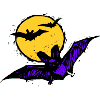Wildlife Disease and Zoonotics

Zoonotics and Wildlife Disease: Publications
Document Type
Article
Date of this Version
December 1999
Abstract
Biotoxins are usually defined as poisons that are produced by and derived from the cells or secretions of living organisms. These natural poisons include some of the most toxic agents known and they are found within a wide variety of life forms. Organisms that produce such toxins are generally classified as being venomous or poisonous. The classification of venomous is usually associated with animal life forms such as poisonous reptiles and insects that have highly developed cellular mechanisms for toxin production and that deliver their toxins during a biting (rattlesnake) or stinging (black widow spider) act. Poisonous organisms are generally thought of as those that deliver toxins by being ingested or by their secretions being ingested by another organism. Therefore, these toxins are essentially forms of food poisoning. Readers should appreciate that virtually all venomous organisms are poisonous but many poisonous organisms are not venomous. This Section will address poisonous, but not venomous, organisms, and it includes the perspective of biotoxins as products of plants and lower life forms.


Comments
Published in Field Manual of Wildlife Diseases: General Field Procedures and Diseases of Birds, edited by Milton Friend and J. Christian Franson, USGS-National Wildlife Health Center, 1999 (online 2007; http://www.nwhc.usgs.gov/publications/field_manual/).